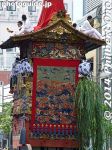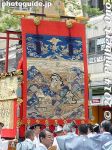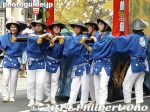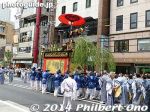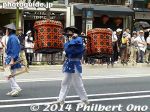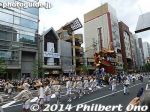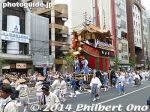 Image search results - "yamahoko" Image search results - "yamahoko" |
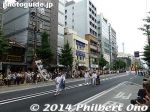
The start of the Gion Matsuri Ato Matsuri yama-hoko procession on July 24, 2014. Held 1 week after the main Saki Matsuri procession on July 17.
|
|
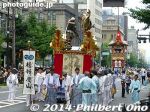
Hashi Benkei-yama 橋弁慶山 - From the famous Noh play called "Hashi Benkei," it shows the fight scene between Benkei and Ushiwakamaru at Gojo Ohashi Bridge in Kyoto.
|
|

Kita Kannon-yama 北観音山 - Worships Yoryu Kannon (揚柳観音) to dispel illness, and Idaten, a guardian deity.
|
|
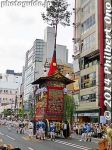
A large willow branch sticks out from the rear.
|
|
|
|
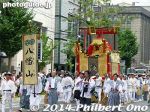
Hachiman-yama 八幡山 - Worships the god Hachiman in a miniature shrine, whose spirit was transferred from the local Hachiman-gu shrine.
|
|
|

Kawaramachi-dori going to Shijo-dori road.
|
|

Jomyo-yama 浄妙山
|
|
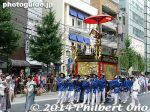
Jomyo-yama 浄妙山
|
|
|
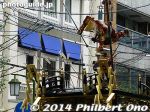
Jomyo-yama 浄妙山 - Depicts the famous 12th-century battle between the Heike and Genji Clans at Uji River in Kyoto in the Tale of the Heike. It shows warrior-monk Ichirai jumping over Jomyo to take credit as the first to engage the enemy.
|
|
|
|

Suzuka-yama 鈴鹿山 - Dedicated to the goddess Suzuka who lives in the Suzuka Mountains and eliminated the demon terrorizing local residents and travelers to Ise. She wears a gold eboshi hat.
|
|
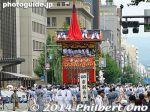
Minami Kannon-yama about to turn at the Kyoto City Hall corner.
|
|
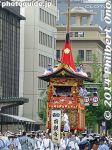
Minami Kannon-yama 南観音山 - Worships Yoryu Kannon (揚柳観音), which dispels illness. The large willow branch also dispels illness. Medicine balls are on the four corners.
|
|
|
|
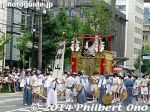
Koi-yama 鯉山 - Shows a carp (koi) swimming up a ryumon waterfall to become a dragon. The tapestries, depicting the Trojan War, were made in Belgium in the 16th century. (Important Cultural Properties)
|
|

En no Gyoja-yama 役行者山 - Depicts En-no-Gyoja, in the middle, an ascetic who had Hitokoto Nushi (standing on left) build a stone bridge between Katsuragi and Mt. Omine in Nara. On the right is the Goddess Katsuragi.
|
|

Kuronushi-yama 黒主山 - From the Noh play called "Shiga," it shows 10th-century poet Otomo no Kuronushi looking up at cherry blossoms.
|
|
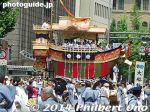
Ofune-hoko 大船鉾 - Gion Matsuri's brand new float parading for the first time today on July 24, 2014.
|
|
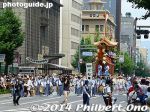
Costing over US$10 million, this float always appears last in the Ato Matsuri. It rejoins the Gion Matsuri after being absent for 150 years when the previous float was caught in a fire in 1864.
|
|
|
|
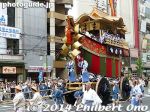
The new boat float (Ofune-hoko) rejoins the Gion Matsuri after a 150-year absence. It always appears last in the float procession.
|
|
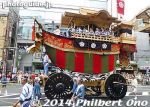
Meet Gion Matsuri's new boat float, Ofune-hoko.
|
|
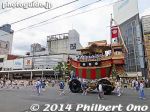
During the Ofune-hoko's 500-year history, it repeatedly suffered from fires, but was rebuilt each time until 1864 when it caught fire caused by a skirmish (Hamaguri Gate Rebellion 蛤御門の変) at the Kyoto Imperial Palace.Notice the boat rudder.
|
|
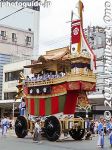
Gion Matsuri now has two boat floats. The boat float (Fune-hoko) in the Saki Matsuri procession is said to be going to battle, while the Ofune-hoko is on a triumphant return from battle. Both boat floats worship the legendary Empress Jingu.
|
|
|
|




